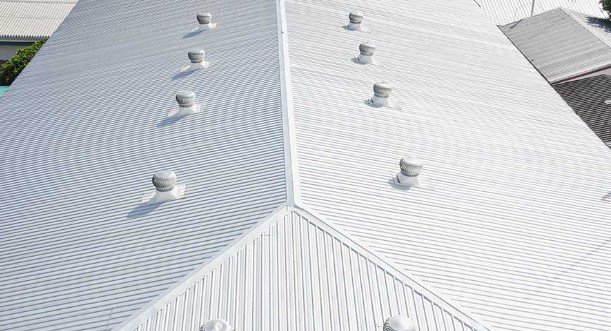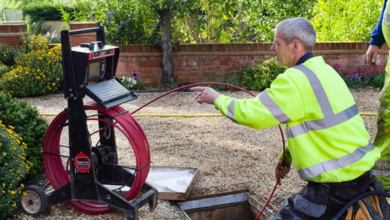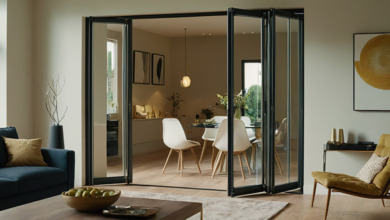The Benefits of Installing Reflective Roofing Materials

Reflective roofing materials, often called “cool roofs,” are gaining popularity among homeowners and businesses for improving energy efficiency and reducing environmental impact. These materials are designed to reflect more sunlight and absorb less heat than traditional roofing materials, keeping buildings cooler and reducing the need for air conditioning. Property owners in Tucson, AZ, can enjoy various benefits by installing reflective roofing, from lower energy bills to enhanced comfort and extended roof lifespan. We will explore the advantages of reflective roofing materials and how they can contribute to a more sustainable and cost-effective living or working environment.
Energy Efficiency and Cost Savings
One of the most significant benefits of installing reflective roofing materials is improved energy efficiency. By reflecting a higher percentage of sunlight, these roofs can dramatically reduce the heat a building absorbs. This reduction in heat absorption leads to lower indoor temperatures, decreasing reliance on air conditioning systems. As a result, homeowners and businesses can experience substantial savings on energy bills, particularly during the hot summer months.
Reflective roofs can reduce cooling costs by up to 15% in warm climates, translating into significant financial savings. Additionally, the reduced demand for air conditioning can lessen the strain on electrical grids, contributing to lower overall energy consumption and reduced greenhouse gas emissions. This energy efficiency benefits individual property owners and supports broader efforts to combat climate change and promote sustainability.
Enhanced Comfort and Indoor Climate
In addition to reducing energy costs, reflective roofing materials can enhance a building’s comfort and indoor climate. These roofs help maintain a more consistent indoor temperature by minimizing heat absorption, creating a cooler and more comfortable living or working environment. This improved climate control can be particularly beneficial in spaces without air conditioning or where cooling systems struggle to keep up with extreme heat.
Reflective roofs can also help reduce the heat island effect, a phenomenon where urban areas become significantly warmer than their rural surroundings due to human activities and infrastructure. By lowering roof surface temperatures, reflective materials can contribute to cooler urban environments, improving outdoor comfort and reducing heat-related health risks for city dwellers.
Extended Roof Lifespan and Durability
Installing reflective roofing materials can also extend a roof’s lifespan by reducing thermal stress and UV radiation exposure. Traditional roofing materials, such as asphalt shingles, can become damaged over time due to constant expansion and contraction caused by temperature fluctuations. Reflective roofs minimize these temperature variations, decreasing the wear and tear on roofing materials and prolonging their durability.
The reduction in heat absorption also protects the roof from UV radiation, which can cause materials to degrade and lose their protective properties. By shielding the roof from UV damage, reflective materials can help maintain the structural integrity and appearance, delaying costly repairs or replacements. This extended lifespan provides financial savings for property owners and reduces the environmental impact associated with frequent roofing material production and disposal.
Environmental Benefits and Sustainability
Reflective roofing materials offer several environmental benefits that contribute to sustainability efforts. By reducing energy consumption and greenhouse gas emissions, these roofs help mitigate the impacts of climate change and promote a more sustainable future. The decreased demand for air conditioning also results in lower fossil fuel consumption, reducing carbon emissions and conserving valuable natural resources.
In addition to these direct environmental benefits, reflective roofs can support urban sustainability initiatives. Reducing the heat island effect helps improve air quality and decrease the demand for energy-intensive cooling solutions in densely populated areas. Some reflective roofing materials are made from recycled or sustainable materials, further enhancing their environmental credentials and supporting circular economy principles.
Read also: How to Choose the Right Roofing Contractor for an Eco-Friendly Roof
Incentives and Marketability
The growing awareness of the benefits of reflective roofing materials has increased incentives and marketability for property owners who install them. Many governments and utilities offer rebates, tax credits, or other financial incentives to encourage the adoption of energy-efficient roofing solutions. These incentives can significantly offset the initial cost of installing reflective roofing, making it a more accessible option for homeowners and businesses.
Reflective roofing can enhance a property’s marketability by appealing to environmentally conscious buyers and tenants. Energy-efficient features are increasingly sought after in the real estate market, and properties with reflective roofs can command higher resale values or attract more prospective tenants. By investing in reflective roofing materials, property owners can enjoy immediate benefits and increase the long-term value and appeal of their assets.
Conclusion
Installing reflective roofing materials offers many benefits, from improved energy efficiency and cost savings to enhanced comfort and environmental sustainability. By reflecting sunlight and reducing heat absorption, these roofs provide a practical solution for combating rising energy costs and addressing the impacts of climate change. Reflective materials’ extended lifespan and durability further contribute to their value, offering long-term financial and environmental advantages. As more property owners recognize the benefits of cool roofs, adopting reflective roofing materials is likely to continue growing, supporting a more sustainable and resilient built environment for future generations.





